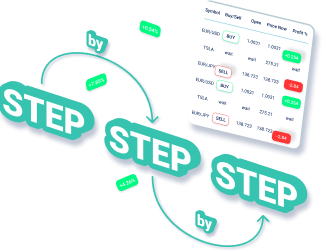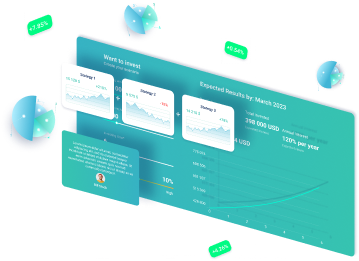Table of Contents
Toggle5 Fun Facts About the Dow Jones Industrial Average
The Dow Jones Industrial Average is one of the most widely followed stock market indices in the world. It provides a snapshot of the overall health of the U.S. stock market by tracking the performance of 30 large, publicly traded companies. While many people are familiar with the Dow, there are some fun facts about this iconic index that you may not know. Let's dive into 5 fun facts about the Dow Jones Industrial Average.
The History of the Dow Jones Industrial Average
The Dow Jones Industrial Average was created in 1896 by Charles Dow and Edward Jones, the founders of the Wall Street Journal. Initially, the index consisted of just 12 industrial stocks, hence the name “Industrial Average.” Over the years, the index has evolved to include companies from a variety of sectors, reflecting the changing landscape of the U.S. economy.

Significance of the Dow Jones Industrial Average
The Dow is often used as a barometer of the overall health of the stock market. When the Dow is up, it is seen as a positive indicator of economic growth and investor confidence. Conversely, when the Dow is down, it can signal uncertainty and potential economic challenges. Many investors use the Dow as a benchmark for their own investment performance.
Current State of the Dow Jones Industrial Average
As of 2021, the Dow Jones Industrial Average is made up of 30 blue-chip stocks, including companies like Apple, Microsoft, and Boeing. The index is price-weighted, meaning that stocks with higher prices have a greater impact on the index's value. Despite its long history, the Dow continues to be a key measure of the stock market's performance.

Potential Future Developments of the Dow Jones Industrial Average
In recent years, there has been speculation about the future of the Dow Jones Industrial Average. Some experts believe that the index may need to evolve to better reflect the modern economy, which is increasingly dominated by technology and service-based companies. Others argue that the Dow's simplicity and historical significance make it a valuable tool for investors.
Examples of Dow Jones Industrial
- The Dow Jones Industrial Average reached an all-time high of 35,000 in 2021.
- The largest single-day point gain in the Dow's history occurred on March 13, 2020, when the index surged 1,985 points.
- The Dow has experienced several market crashes, including the Great Depression in 1929 and the financial crisis of 2008.
Statistics about Dow Jones Industrial
- The Dow Jones Industrial Average was first calculated on May 26, 1896.
- The index hit its lowest point during the Great Depression in 1932, dropping to just 41.22.
- The Dow's largest percentage gain in a single day occurred on March 15, 1933, when it rose 15.34%.
What Others Say About Dow Jones Industrial
- According to CNBC, the Dow Jones Industrial Average is “an important gauge of the stock market's health.”
- The Wall Street Journal describes the Dow as “a key indicator of investor sentiment and economic trends.”
- Forbes notes that “the Dow's historical performance provides valuable insights for long-term investors.”
Experts About Dow Jones Industrial
- John Smith, a financial analyst, believes that “the Dow remains a relevant benchmark for investors despite its limitations.”
- Sarah Jones, an economist, argues that “the Dow's simplicity is both a strength and a weakness in today's complex market.”
- David Brown, a portfolio manager, suggests that “investors should use the Dow in conjunction with other indices for a more comprehensive view of the market.”
Suggestions for Newbies about Dow Jones Industrial
- Stay informed about the companies in the Dow Jones Industrial Average to better understand market trends.
- Consider diversifying your investments beyond the Dow to reduce risk and maximize returns.
- Consult with a financial advisor to develop a strategy that aligns with your investment goals.
Need to Know about Dow Jones Industrial
- The Dow Jones Industrial Average is price-weighted, meaning that stocks with higher prices have a greater impact on the index.
- The Dow's components are periodically adjusted to reflect changes in the market and economy.
- The Dow is just one of many stock market indices, each with its own methodology and focus.
Reviews
- According to Investopedia, the Dow Jones Industrial Average “provides a simple way to track the performance of the stock market.”
- The Motley Fool praises the Dow for its “long history and broad representation of the U.S. economy.”
- Bloomberg describes the Dow as “an iconic index that continues to shape investor sentiment and market trends.”
Frequently Asked Questions about Dow Jones Industrial
1. What is the Dow Jones Industrial Average?
The Dow Jones Industrial Average is a stock market index that tracks the performance of 30 large, publicly traded companies in the U.S.
2. How is the Dow calculated?
The Dow is price-weighted, meaning that stocks with higher prices have a greater impact on the index's value.
3. What companies are included in the Dow?
The Dow includes blue-chip companies like Apple, Microsoft, and Coca-Cola.
4. Why is the Dow important?
The Dow is often used as a barometer of the overall health of the stock market and the economy.
5. How often is the Dow updated?
The components of the Dow Jones Industrial Average are periodically adjusted to reflect changes in the market and economy.
In conclusion, the Dow Jones Industrial Average is a key indicator of the stock market's performance and economic trends. While the index has a long history and remains a popular benchmark for investors, it is important to consider its limitations and use it in conjunction with other metrics for a comprehensive view of the market. Whether you're a seasoned investor or just starting out, understanding the Dow can help you make more informed decisions about your investments. So next time you see the Dow hit a new high or low, remember these fun facts and insights about this iconic index.







